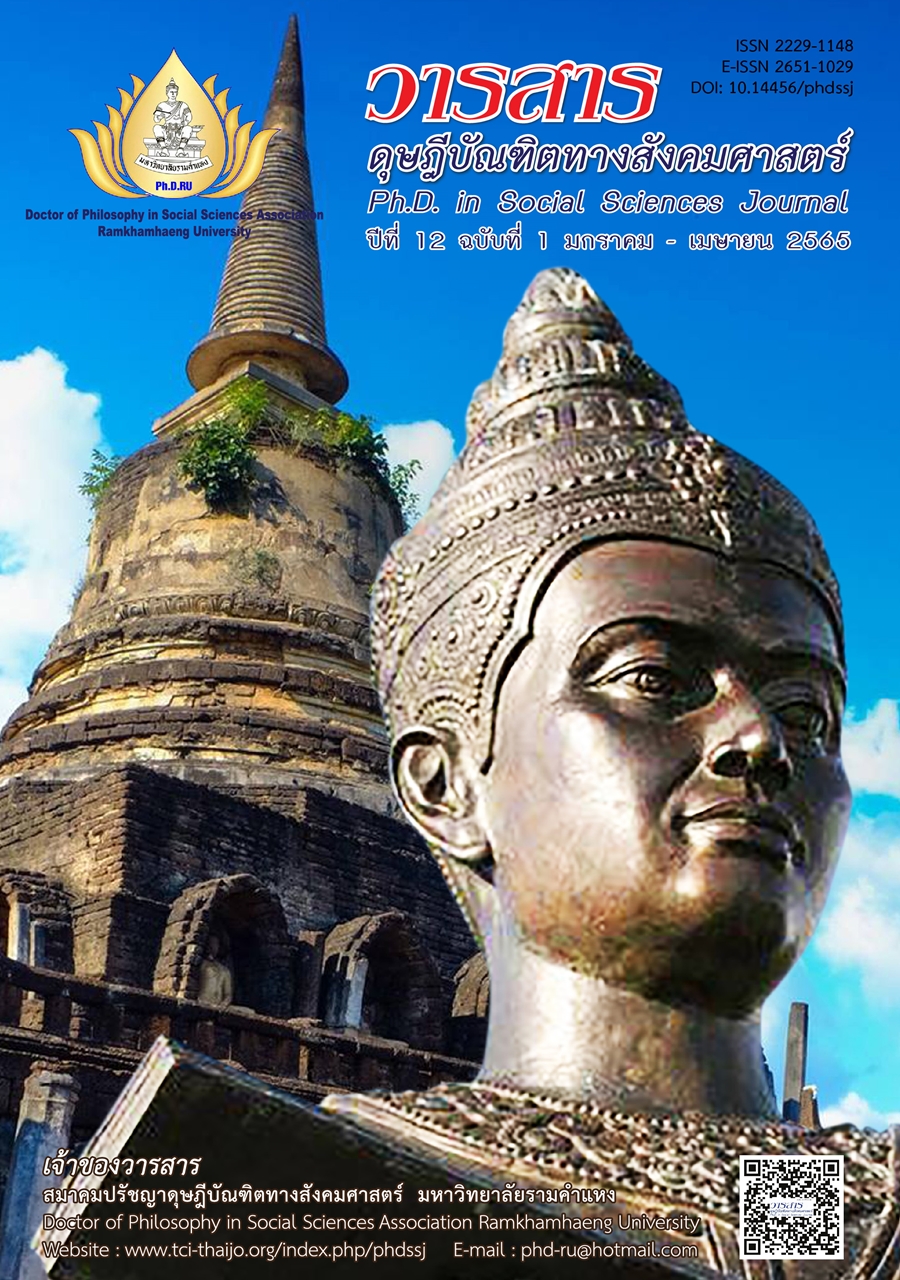A Causal Structural Relationship Model of Factors Influencing the Leadership of Educational Administrators Under the Jurisdiction of Municipalities
Main Article Content
Abstract
This researcher has the following objectives: (1) to study the levels at which the factors are expressed and leadership (2) to study the relationship between these factors and the leadership (3) to study a causal structural relationship model of the factors and leadership and (4) to study the direct and indirect influences of factors exerting effects on the leadership of the educational administrator under the jurisdiction of municipalities. The sample size of 993 persons. The data collected were statistically analyzed in the frequency, percentage, means of standard deviation, simple correlation method and Path-analysis analysis. Furthermore, direct and indirect influences were determined by applying the linear structural relations (LISREL).
Findings are as follows: (1) The levels of factors and leadership were factors of historical background, factors of characteristics, Situational factors, behavioral factors and the leadership. (2) Factors showing correlations with the leadership in descending order were behaviors, situations, characteristics, and the historical background. (3) The causal structural relationship model of factors influencing the leadership exhibited congruence with empirical data at a good level. Accordingly, the model was explanatory of variance in respect to the variables governing the leadership at 74.00 percent. (4) Factors of situations, behaviors, the historical background, and characteristics exhibited direct influence on the leadership. It was also found that situational factors, characteristics, and the historical background evinced indirect influence on the leadership of the educational administrators.
Article Details

This work is licensed under a Creative Commons Attribution-NonCommercial-NoDerivatives 4.0 International License.
Academic articles, research articles, and book reviews in the Ph.D. in Social Sciences Journal are author’s opinions, and not the publisher’s, and is not the responsibility of the Ph.D. in Social Sciences Journal Philosophy Association, Ramkhamhaeng University. (In the case that research is done on human, the researcher has to be trained in Ethics for Doing Research on Human Training and has to produce the evidence of the training).
References
Amornchewin, B. (2013). Managing for results. Parbpim. [In Thai]
Burrow, J. L., Kleindl, B., & Everard, K. E. (2008). Business principles management. Thomson South-Western.
Campbell, D., & Craig, T. (2005). Organisations and the business environment (2nd ed.). Elsevier Butterworth-Heinemann.
Chongvisal, R. (2016). Leadership: Theory, research and approach to development. Chulalongkorn University Press. [In Thai]
Frohman, D., & Howard, R. (2008). Leadership the hard way: why leadership can’t be taught and how you can learn it anyway. Jossey-Bass.
Greenwald, H. P. (2008). Organizations: Management without control. Sage.
Henein, A., & Morissette, F. (2007). Made in Canada leadership: Wisdom from the nation’s best and brightest on leadership practice and development. John Wiley & Sons.
Hunsaker, P. L. (2005). Management: A skills approach (2nd ed.). Prentice Hall.
Klann, G. (2007). Building character: Strengthening the heart of good leadership. Jossey-Bass.
Nonthnathorn, P. (2015). Operational leadership: LIFF model. Social Enterprise Leadership Center, Kasetsart University. [In Thai]
Northouse, P. G. (2007). Leadership: Theory and practice. Sage.
Puksawadde, A. (2013). Public relations for image building. V. Print. [In Thai]
Roongrerngsuke, S. (2012). Smart Leadership: Leadership strategy at the guru level. Krungthep Turakij Media. [In Thai]
Storey, J. (2004). Leadership in organizations: Current issues and key trends. Routledge.
Viraku, B. (2015). Leadership. National Institute of Development Administration. [In Thai]
Yawirat, N. (2015). Organization development and change. Triple Group. [In Thai]


